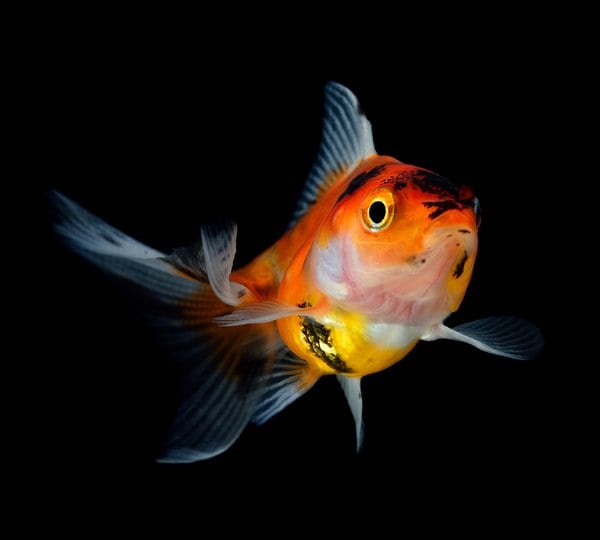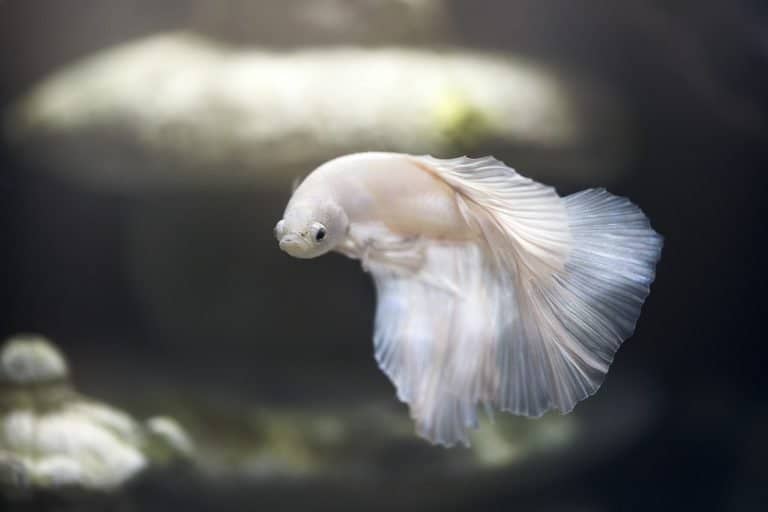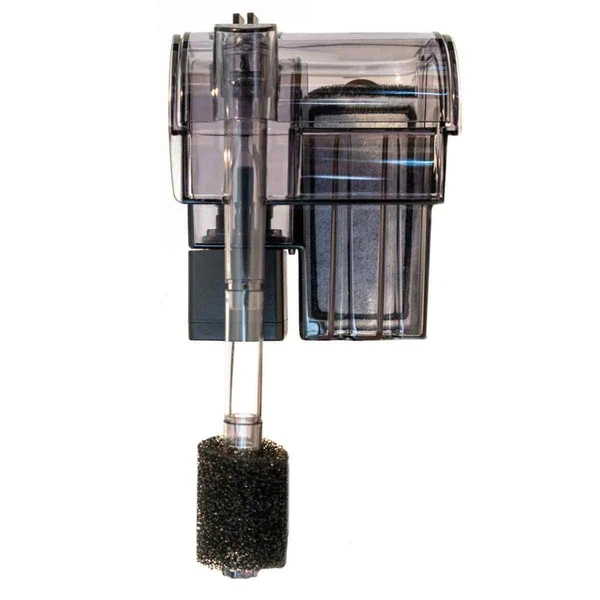Are you a goldfish owner? Have you noticed mysterious black spots on your beloved pet? Don’t worry, we’ve got you covered!
In this article, we will explore the 7 common causes of black spots on goldfish and provide effective treatment options. From poor water quality to genetic factors, we’ll delve into the possible culprits behind these spots.
So sit back, relax, and let us help you understand and address this common issue that goldfish enthusiasts face.
Key Takeaways
- High ammonia levels in the water can cause black spot disease in goldfish.
- Regular monitoring of ammonia levels and frequent water changes are crucial for maintaining water quality and preventing black spots.
- Poor water quality can weaken the goldfish’s immune system, making them susceptible to fungal and bacterial infections.
- Genetic factors and nutritional deficiencies can also contribute to the development of black spots on goldfish.
Poor Water Quality
One of the main causes of black spots on goldfish is poor water quality. When the water quality in their tank or pond isn’t up to par, goldfish can develop black spots on their bodies. This condition, commonly known as black spot disease, is often a result of high ammonia levels in the water.
Ammonia, which is produced by fish waste and leftover food, can cause ammonia burn and ultimately lead to ammonia poisoning. To prevent this, it’s crucial to regularly monitor the ammonia level and perform frequent water changes to maintain a healthy environment for the goldfish.
Ammonia Poisoning
To address the issue of ammonia poisoning in goldfish, we need to understand the detrimental effects it can have on their health and well-being.
Ammonia is a toxic chemical that can build up in the tank water, especially when there are high ammonia levels. This can occur due to overfeeding, overcrowding, or insufficient filtration.
When goldfish are exposed to high levels of ammonia, it can cause damage to their gills and internal organs, leading to respiratory distress, lethargy, and even death.
To prevent ammonia poisoning, it’s essential to maintain proper water parameters and perform regular water changes. By testing ammonia levels in the tank and taking corrective actions, such as adjusting feeding habits and increasing filtration, we can ensure the well-being of our goldfish and provide them with a clean and healthy environment.
Fungal Infections
When treating goldfish for black spots, it’s important to address fungal infections, which can be caused by various factors. Fungal infections can cause black spots on goldfish, leading to the development of black patches or a color change in their scales.
To paint a picture for you, here are some common causes and preventive measures for fungal infections:
- Poor Water Quality
- High levels of ammonia in the water can weaken the goldfish’s immune system, making them more susceptible to fungal infections.
- Regular water changes can help prevent ammonia buildup and maintain a healthy environment for your goldfish.
- Presence of Water Snails
- Snails can carry fungal spores that may infect goldfish.
- It’s important to ensure that your goldfish tank is free from snails or any other potential carriers of fungal infections.
Bacterial Infections
After addressing fungal infections, we must now delve into the issue of bacterial infections, which can also contribute to the formation of black spots on your goldfish.
If your goldfish has black spots or if you notice that your goldfish might be turning black, it could be a sign of a bacterial infection. Bacterial infections are one of the causes of black spots on your goldfish. These infections can occur due to poor water quality, stress, or injury.
To treat bacterial infections and prevent your goldfish from turning black, it’s important to maintain clean and well-filtered water in the aquarium. Regular water changes and proper filtration can help prevent bacterial growth. In severe cases, antibiotics may be necessary to treat the infection and restore your goldfish’s health.
Parasites and External Pests
Now, let’s explore the presence of parasites and external pests as another potential cause of black spots on goldfish. These tiny creatures can wreak havoc on our beloved goldfish, causing black spots to appear on their bodies.
Here are two sub-lists that will help you understand the impact of parasites and external pests on our goldfish:
- Parasitic Fluke Disease:
- These microscopic worms attach themselves to the goldfish’s skin and gills, leading to the development of black spots.
- To treat this condition, you can use medication specifically designed to eliminate parasites.
- Black Spot Disease:
- Caused by a type of flatworm, this disease manifests as black spots on the goldfish’s body.
- Treating this condition involves using medications that target the flatworms and prevent further infestation.
Stress and Environmental Factors
To address the impact of stress and environmental factors on goldfish, we must consider their potential role in the development of black spots. Stress can arise from various sources, such as poor water quality, overcrowding, abrupt changes in temperature or pH levels, and inadequate nutrition. These factors can weaken the immune system of goldfish, making them more susceptible to infections and diseases that manifest as black spots.
Additionally, environmental factors like exposure to harsh sunlight or chemicals in the water can also contribute to the appearance of these spots.
To treat black spots caused by stress and environmental factors, it’s important to ensure a clean and well-maintained tank, provide a balanced diet, and create a stress-free environment for the goldfish. Regular water testing and appropriate water changes are essential to prevent stress-related issues and maintain the overall health of your goldfish.

Genetic Factors and Color Changes
Goldfish genetics play a significant role in the occurrence of black spots and color changes. When it comes to goldfish, their genetics can cause them to turn black or change color in various ways. Here are a couple of examples to paint a clearer picture:
- Different Varieties: Goldfish may naturally develop black spots or change color due to their genetic makeup. For instance, the Black Moor goldfish is known for its dark spots, which are a result of specific genetic traits.
- Mutation: Sometimes, a goldfish may undergo a genetic mutation that causes it to change color. This can result in the development of black spots or an overall darkening of the fish’s coloration.
If you notice that your goldfish is turning black or developing black spots, it’s essential to understand that this is often a result of genetic factors. Keeping your goldfish in a healthy and stress-free environment can help maintain its natural colors and minimize the occurrence of black spots.
Nutritional Deficiencies
One possible cause of black spots on goldfish is a lack of essential nutrients in their diet. Nutritional deficiencies can weaken the immune system of goldfish, making them more susceptible to diseases like black spot disease. Goldfish require a balanced diet that includes a variety of nutrients to maintain their health and vibrant coloration.
A diet lacking in essential vitamins, minerals, and proteins can lead to the appearance of black spots on their scales. To treat goldfish with black spots caused by nutritional deficiencies, it’s important to provide them with a high-quality diet that meets their nutritional needs.
This can be achieved by feeding them a combination of commercial fish food, fresh vegetables, and occasional live or frozen foods. By addressing the nutritional causes, goldfish can regain their health and beauty.
Effective Treatment Options
We can effectively treat black spots on goldfish by implementing various treatment options. Here are some effective ways to address this issue:
- Water Quality Management
- Regularly test the water parameters and ensure they’re within the appropriate range.
- Perform partial water changes to maintain optimal water conditions.
- Use a reliable water conditioner to remove harmful substances.
- Dietary Adjustments
- Provide a balanced and nutritious diet for your goldfish.
- Include high-quality fish food pellets and fresh vegetables in their diet.
- Avoid overfeeding, as it can lead to poor water quality and health problems.
Conclusion
In conclusion, black spots on goldfish can be caused by various factors such as: – Poor water quality – Infections – Parasites – Stress – Genetics – Nutritional deficiencies
It’s important to address these issues promptly to ensure the health and well-being of your goldfish. By maintaining proper water conditions, providing a balanced diet, and seeking appropriate treatment options when necessary, you can help prevent and treat black spots on your goldfish, keeping them happy and vibrant.
Q: What are the common causes of black spots on goldfish?
A: The common causes of black spots on goldfish can include black spot disease, ammonia levels in the water, genetic predisposition, injury, stress, or poor water quality.
Q: How can I tell if my goldfish has black spot disease?
A: Black spot disease in goldfish is characterized by the appearance of black spots or patches on the body, fins, or tail. These spots may start as small smudges and can grow larger over time.
Q: What should I do if my goldfish start turning black?
A: If you notice your goldfish turning black, it’s important to check the water parameters and ensure that the tank is clean and well-maintained. Monitor your goldfish for signs of distress or illness and consider consulting a vet for further advice.
Q: How do I treat black spots on my goldfish?
A: Treatment for black spots on goldfish may involve improving water quality, reducing stress, and using appropriate medications as recommended by a vet. It’s important to address the underlying cause of the black spots for effective treatment.
Q: Can black spots on a goldfish go away on their own?
A: In some cases, black spots on goldfish may fade or disappear on their own if the underlying cause is addressed and the goldfish’s environment is improved. However, it’s important to monitor the goldfish closely and seek medical advice if needed.
Q: What are the potential reasons why my goldfish is getting black spots?
A: Goldfish may develop black spots due to various reasons such as poor water quality, ammonia build-up, genetic factors, injury, stress, or underlying health issues. Identifying the specific cause is important for effective treatment.
Q: How can I prevent my goldfish from getting black spots?
A: To prevent black spots on goldfish, ensure that the aquarium is properly maintained with clean water and suitable conditions for the fish. Avoid overstocking the tank, monitor water parameters, and provide a balanced diet to keep your goldfish healthy.
Q: Are black spots on goldfish a sign of a serious health issue?
A: While black spots on goldfish may indicate underlying health concerns, not all cases are necessarily serious. It’s important to assess the overall behavior and well-being of the goldfish and seek appropriate veterinary care if needed.
Q: Can fin rot and black spot disease be related?
A: Fin rot and black spot disease are separate conditions that can affect goldfish. While they may have different causes and symptoms, both conditions can impact the fish’s overall health and require proper attention and treatment.
Q: What are the common types of goldfish that may develop black spots?
A: Various types of goldfish, including common goldfish, comet goldfish, shubunkin, and others, may be susceptible to developing black spots. It’s important to monitor all goldfish for signs of illness or changes in their physical appearance.




